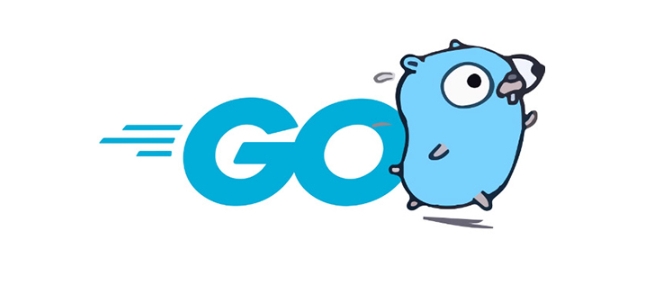What is Golang and why is it used?
Jul 31, 2025 am 10:35 AMGo was created to address slow build times, complex codebases, and concurrency challenges in large-scale systems. 1. It offers simplicity and readability with minimal syntax, reducing cognitive load. 2. It provides excellent concurrency support via goroutines and channels, enabling efficient handling of thousands of concurrent operations. 3. It ensures fast compilation and execution by compiling to machine code and producing dependency-free static binaries. 4. It includes a strong standard library for common tasks like HTTP, JSON, and cryptography, reducing third-party dependencies. 5. It comes with built-in tooling such as go fmt, go mod, and go test, promoting consistency and productivity. Go is commonly used in cloud and network services (e.g., Docker, Kubernetes), CLI tools, high-performance APIs, and DevOps infrastructure. Major companies like Google, Uber, Twitch, and Netflix use Go for its performance, scalability, and reliability in modern cloud environments. In summary, Go is ideal for building scalable, efficient backend systems in distributed environments, offering high performance, simple deployment, and robust tooling, making it a top choice for microservices and infrastructure projects.

Go, often referred to as Golang, is a statically typed, compiled programming language developed by Google in 2007 (officially released in 2009) by Robert Griesemer, Rob Pike, and Ken Thompson. Despite the nickname "Golang," the official name is just Go — the "lang" part comes from its domain, golang.org.

Why Was Go Created?
Go was designed to solve real-world engineering challenges Google faced: slow build times, complex codebases, and the need for efficient concurrency in large-scale distributed systems. The goal was to combine the simplicity and readability of dynamic languages (like Python) with the performance and safety of compiled languages (like C ), while also improving developer productivity and system scalability.
Key Features That Make Go Popular
1. Simplicity and Readability
Go intentionally avoids complex features like inheritance, method overloading, or generics (though added later in Go 1.18). Its syntax is clean and minimal, making code easy to read and maintain.

Example: A basic "Hello, World!" in Go:
package main import "fmt" func main() { fmt.Println("Hello, World!") }
This simplicity lowers the learning curve and reduces the cognitive load when working on large teams.

2. Excellent Support for Concurrency
Go has built-in language features for handling concurrent operations — goroutines and channels.
- Goroutines are lightweight threads managed by the Go runtime.
- Channels allow safe communication between goroutines.
This makes Go ideal for building scalable network services and microservices.
Example:
go doSomething() // runs concurrently
You can launch thousands of goroutines with minimal overhead — something hard to do efficiently in many other languages.
3. Fast Compilation and Execution
Go compiles directly to machine code, so it runs fast — much faster than interpreted languages. It also compiles very quickly, which improves developer iteration speed.
Plus, Go produces single static binaries with no external dependencies, making deployment simple and reliable across different environments.
4. Strong Standard Library
Go comes with a robust standard library that includes powerful packages for:
- HTTP servers and clients
- JSON/XML handling
- Cryptography
- File I/O
- Testing (
go testand built-in coverage tools)
This reduces reliance on third-party libraries for common tasks.
5. Built-in Tooling
Go includes excellent tooling out of the box:
-
go fmt– enforces consistent code formatting -
go mod– dependency management -
go vet– static analysis -
go run,go build,go test– straightforward commands
These tools promote consistency and reduce configuration overhead.
Where Is Go Commonly Used?
? Cloud and Network Services
Many cloud-native tools are built in Go:
- Docker
- Kubernetes
- Prometheus
- Terraform
- Etcd
Its efficiency, concurrency model, and fast startup time make it perfect for microservices and containerized environments.
? CLI Tools
Because Go compiles to a single binary, it's great for building cross-platform command-line tools that are easy to distribute.
? High-Performance Backend APIs
Go is widely used for RESTful APIs and backend services where low latency and high throughput matter.
? DevOps and Infrastructure Tools
Go’s performance and system-level access make it suitable for infrastructure automation, monitoring, and orchestration tools.
Who Uses Go?
Big tech companies using Go include:
- Google (original creator)
- Uber
- Twitch
- Dropbox
- Netflix
- Shopify
It’s especially popular in startups and scale-ups building modern cloud infrastructure.
Summary: Why Use Go?
Here’s a quick list of why developers and companies choose Go:
- ? High performance – compiled to machine code, efficient runtime
- ? Simple and readable syntax – easier to learn and maintain
- ? Excellent concurrency support – goroutines and channels
- ? Easy deployment – single binary, no external dependencies
- ?? Great standard library and tooling – batteries included
- ?? Ideal for modern cloud applications – used heavily in DevOps and microservices
Basically, if you're building scalable, reliable, and efficient backend systems — especially in a cloud environment — Go is a strong, modern choice. It’s not always the best for everything (e.g., GUI apps or AI/ML), but for network services and infrastructure, it shines.
The above is the detailed content of What is Golang and why is it used?. For more information, please follow other related articles on the PHP Chinese website!

Hot AI Tools

Undress AI Tool
Undress images for free

Undresser.AI Undress
AI-powered app for creating realistic nude photos

AI Clothes Remover
Online AI tool for removing clothes from photos.

Clothoff.io
AI clothes remover

Video Face Swap
Swap faces in any video effortlessly with our completely free AI face swap tool!

Hot Article

Hot Tools

Notepad++7.3.1
Easy-to-use and free code editor

SublimeText3 Chinese version
Chinese version, very easy to use

Zend Studio 13.0.1
Powerful PHP integrated development environment

Dreamweaver CS6
Visual web development tools

SublimeText3 Mac version
God-level code editing software (SublimeText3)

Hot Topics
 Golang vs. C : Performance and Speed Comparison
Apr 21, 2025 am 12:13 AM
Golang vs. C : Performance and Speed Comparison
Apr 21, 2025 am 12:13 AM
Golang is suitable for rapid development and concurrent scenarios, and C is suitable for scenarios where extreme performance and low-level control are required. 1) Golang improves performance through garbage collection and concurrency mechanisms, and is suitable for high-concurrency Web service development. 2) C achieves the ultimate performance through manual memory management and compiler optimization, and is suitable for embedded system development.
 Golang and C : Concurrency vs. Raw Speed
Apr 21, 2025 am 12:16 AM
Golang and C : Concurrency vs. Raw Speed
Apr 21, 2025 am 12:16 AM
Golang is better than C in concurrency, while C is better than Golang in raw speed. 1) Golang achieves efficient concurrency through goroutine and channel, which is suitable for handling a large number of concurrent tasks. 2)C Through compiler optimization and standard library, it provides high performance close to hardware, suitable for applications that require extreme optimization.
 Golang vs. Python: Performance and Scalability
Apr 19, 2025 am 12:18 AM
Golang vs. Python: Performance and Scalability
Apr 19, 2025 am 12:18 AM
Golang is better than Python in terms of performance and scalability. 1) Golang's compilation-type characteristics and efficient concurrency model make it perform well in high concurrency scenarios. 2) Python, as an interpreted language, executes slowly, but can optimize performance through tools such as Cython.
 MySQL vs. Other Programming Languages: A Comparison
Apr 19, 2025 am 12:22 AM
MySQL vs. Other Programming Languages: A Comparison
Apr 19, 2025 am 12:22 AM
Compared with other programming languages, MySQL is mainly used to store and manage data, while other languages ??such as Python, Java, and C are used for logical processing and application development. MySQL is known for its high performance, scalability and cross-platform support, suitable for data management needs, while other languages ??have advantages in their respective fields such as data analytics, enterprise applications, and system programming.
 The Future of C : Adaptations and Innovations
Apr 27, 2025 am 12:25 AM
The Future of C : Adaptations and Innovations
Apr 27, 2025 am 12:25 AM
The future of C will focus on parallel computing, security, modularization and AI/machine learning: 1) Parallel computing will be enhanced through features such as coroutines; 2) Security will be improved through stricter type checking and memory management mechanisms; 3) Modulation will simplify code organization and compilation; 4) AI and machine learning will prompt C to adapt to new needs, such as numerical computing and GPU programming support.
 Why Use PHP? Advantages and Benefits Explained
Apr 16, 2025 am 12:16 AM
Why Use PHP? Advantages and Benefits Explained
Apr 16, 2025 am 12:16 AM
The core benefits of PHP include ease of learning, strong web development support, rich libraries and frameworks, high performance and scalability, cross-platform compatibility, and cost-effectiveness. 1) Easy to learn and use, suitable for beginners; 2) Good integration with web servers and supports multiple databases; 3) Have powerful frameworks such as Laravel; 4) High performance can be achieved through optimization; 5) Support multiple operating systems; 6) Open source to reduce development costs.
 Golang vs. Python: Key Differences and Similarities
Apr 17, 2025 am 12:15 AM
Golang vs. Python: Key Differences and Similarities
Apr 17, 2025 am 12:15 AM
Golang and Python each have their own advantages: Golang is suitable for high performance and concurrent programming, while Python is suitable for data science and web development. Golang is known for its concurrency model and efficient performance, while Python is known for its concise syntax and rich library ecosystem.
 Golang vs. Python: The Pros and Cons
Apr 21, 2025 am 12:17 AM
Golang vs. Python: The Pros and Cons
Apr 21, 2025 am 12:17 AM
Golangisidealforbuildingscalablesystemsduetoitsefficiencyandconcurrency,whilePythonexcelsinquickscriptinganddataanalysisduetoitssimplicityandvastecosystem.Golang'sdesignencouragesclean,readablecodeanditsgoroutinesenableefficientconcurrentoperations,t






